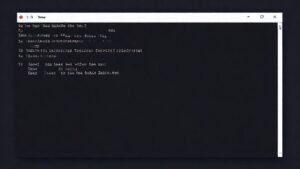Nepal social media ban: Digital governance, censorship, and the path forward
- THE MAG POST

- Sep 8
- 5 min read

Nepal social media ban has reshaped the daily flow of information, signaling a firm stance on platform accountability and national security. Officials argue the move protects citizens and upholds local laws, while platforms face mounting pressure to register. The public debate now centers on rights, access, and the balance between security and open discourse.
Observers warn that blanket blocking risks chilling effects and economic disruption, especially for small businesses and independent media. Proponents say transparency and clear criteria will emerge through the registration process, yet questions remain about due process, oversight, and how long the restrictions will endure.
The ban in context and legal triggers
In a bold assertion of digital sovereignty, the government has moved to restrict access to a broad swath of online platforms, arguing that clear registration and oversight are necessary to uphold local laws and national security. The decision has immediate practical consequences for everyday users, businesses, and journalists who rely on these services for communication and information sharing.
Rationale behind the seven-day deadline
The seven-day deadline is pitched as a firm call for platforms to register with the Ministry of Communications and Information Technology, aligning with the Directive on Regulating the Use of Social Media. Proponents say the deadline creates a clear line of accountability and narrows spaces for unregulated activity, simplifying enforcement for authorities.
Critics warn that such a compressed timetable may overlook technical, legal, and operational hurdles, potentially triggering overbroad takedowns or inadvertent disruption to legitimate speech. The collision between rapid compliance and due process raises questions about proportionality and safeguards against abuse.
Supreme Court directive and government response
The directive traces its lineage to a contempt of court case in which the Supreme Court pressed for robust registration and monitoring of online platforms operating within Nepal. The ruling framed the policy as a constitutional imperative to curb unlawful or harmful content while preserving lawful expression within a governed framework.
Responding to the directive, the government published public notices detailing the registration requirements and the consequences for non-compliance. Critics argue that transparency and independent oversight must accompany such measures to prevent executive overreach and ensure predictable application of the rules.
Rights, censorship, and public discourse
Questions about freedom of expression, press freedom, and public access to information have moved to the forefront of the national debate as platforms are blocked or restricted. The move has immediate implications for civil society, investigative journalism, and grassroots activism that depend on open channels of communication.
Impact on freedom of expression
Blocking or limiting access to major social platforms can curtail the ability of citizens to organize, report, and engage in political discourse. Even temporary outages can have a chilling effect, prompting self-censorship among journalists and activists who fear repercussions for sharing controversial or critical content.
While regulators frame the action as temporary and targeted, the precedent it sets for gatekeeping online spaces is consequential. The balance between security objectives and expressive rights remains a contested terrain that requires careful scrutiny, clear sunset clauses, and transparent criteria for reinstatement.
Responses from critics and observers
Rights groups and digital advocates have likened the move to overbroad censorship, urging authorities to publish the criteria for listing and to provide accessible appeal mechanisms. International observers emphasize the importance of maintaining press freedom and ensuring that any restrictions are proportionate, time-bound, and rights-respecting.
Experts call for ongoing transparency, independent monitoring, and meaningful public consultation. They argue that a robust regulatory framework should protect users while enabling legitimate security and governance objectives, rather than relying on blanket or indefinite platform blocking.
Policy mechanics and enforcement
The policy architecture centers on a regulatory framework that requires platforms to register locally, appoint a contact person, and establish complaint handling mechanisms. These measures aim to align online services with national norms while granting authorities a pathway to address unwanted content and harmful activity.
Directive 2080 and registration process
Under the directive, platforms are expected to submit local documentation, designate a compliance officer, and implement processes to handle user complaints within Nepal. The process is designed to create a clear channel for accountability and to facilitate prompt redress for users who encounter issues with platform behavior.
Officials stress that registration is a prerequisite for continued operation, with non-compliant services facing deactivation and subsequent reinstatement only after meeting the listed requirements. The approach seeks to deter noncompliant actors while preserving legitimate access for those who comply.
Operational status of platforms
The government lists a mixture of platforms that are blocked, reactivated, or still under review. Some services have been temporarily suspended, while others remain accessible or are undergoing the registration process. This patchwork reflects the evolving nature of enforcement and the technical challenges involved in nationwide restriction.
Officials indicate that platforms that complete registration will be reactivated promptly, signaling a direct link between compliance and service restoration. Critics warn that the opaque handling of lists and timing may undermine trust in the regulatory regime and in rule of law principles.
What happens next for Nepal and digital governance
Analysts anticipate a consequential period of policy refinement, parliamentary debate, and stakeholder input as Nepal negotiates the balance between security imperatives and civil liberties. The episode is likely to influence broader regional conversations on digital sovereignty and platform accountability.
Potential economic and social consequences
Businesses relying on social platforms for marketing and customer engagement may face disrupted digital channels and uncertain reach. Media outlets and independent creators could experience changes in audience access, while civil society groups may need to diversify communication strategies to sustain outreach.
Societal impacts will hinge on how effectively the policy safeguards rights, preserves access to information, and mitigates unintended harm. The long-term trajectory will depend on transparent governance, predictable enforcement, and meaningful avenues for redress and reform.
Lessons for policymakers and platforms
Policymakers may learn the importance of clear, time-bound procedures, transparent decision-making, and robust avenues for appeal. Platforms, in turn, will likely push for clearly defined criteria, predictable timelines, and cooperative mechanisms that minimize disruption while upholding public interests.
Both sides will benefit from structured sunset clauses, regular impact assessments, and open channels for civil society input, ensuring that digital governance evolves in step with technological change and societal norms.
Key Takeaways
Summary of stakes
The case tests how a state optimizes security and governance without eroding essential rights. The outcome will shape future regulatory approaches, platform behavior, and the lived experience of online discourse in Nepal and beyond.
As digital policy deepens its reach, the critical questions revolve around transparency, accountability, and the protection of fundamental freedoms within a regulated internet landscape.
Future outlook
Expect ongoing parliamentary scrutiny, potential billwork, and evolving practice around platform registration. The episode may become a reference point for how emerging democracies navigate tech-driven public life, balancing control with open communication and informed citizen participation.
Aspect | Details |
Ban scope | Block on 26 major platforms with some still operational or under review |
Legal trigger | Supreme Court contempt case directing platform registration and monitoring |
Deadline | 7 days to list platforms and comply |
Authorities | Ministry of Communications and Information Technology; Nepal Telecommunication Authority |
Public response | Rights groups warn of censorship; calls for transparency and due process |
Status | Most platforms blocked; some reactivated upon compliance or under processing |






















































Comments